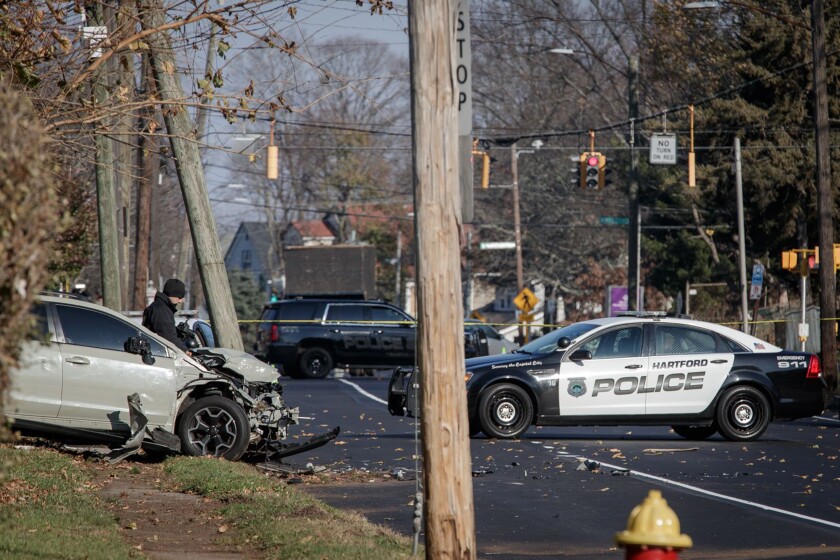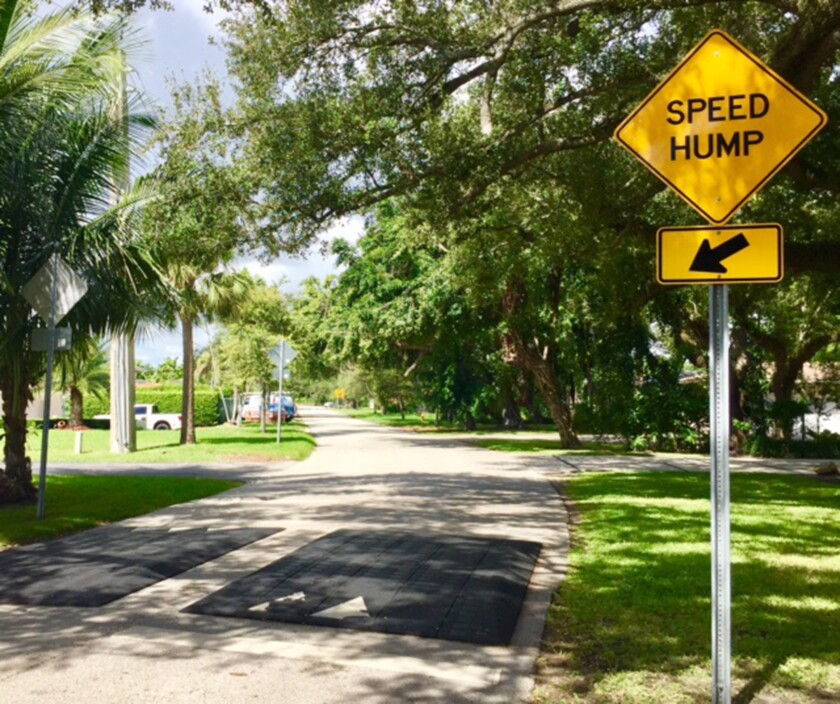In Brief:
Pedestrian deaths reached a 40-year-high last year, as the U.S. continued to see reversals after decades of progress on traffic safety, bucking the trend of other wealthy countries.
But in Hoboken, N.J., which sits across the Hudson River from Lower Manhattan, officials celebrated a happier milestone. Seven years have passed since anyone died in traffic on the city’s streets. Hoboken enjoys some natural advantages as an old, small, walkable city with a tight street grid and lots of residents who commute by mass transit. Still, a steady commitment to designing safer streets from some of the city’s political leaders, including Mayor Ravi Bhalla, have helped slow down vehicles and reduce the overall risk to residents and visitors.
Bhalla served on the Hoboken City Council before becoming mayor, and was at times, by his own admission, only a lukewarm advocate of street safety improvements. He joined most of the council in opposing a plan for protected bike lanes on one of the city’s busiest streets in 2016. But his growing commitment to the cause reflects a larger shift in Hoboken, where street safety initiatives have become an expected priority for most of the political class.
Bhalla became mayor in 2018 and signed an executive order the following year that set a goal of eliminating traffic deaths and serious injuries by 2030, part of the global Vision Zero movement.
“The whole premise of Vision Zero is that we’re all human, and as humans we all make mistakes,” says Bhalla, a Democrat who recently announced a campaign for Congress. “The purpose of Vision Zero is to create an infrastructure that will minimize the likelihood of human error causing a serious accident or a fatality.”
A Variety of Tactics
Vision Zero is part of a shift, pushed by researchers and advocates, to taking a comprehensive public health approach to transportation safety. Politically, it calls for setting specific goals for reducing deaths and injuries in different jurisdictions.
Practically, it’s built on a variety of tactical changes to the way streets are designed and managed. Those changes often involve dedicating space on the street for different modes of transportation and increasing the amount of space dedicated to pedestrians.
In Hoboken, much of the recent Vision Zero work has been focused on “daylighting” intersections. That involves installing things like flexible posts, rain gardens or bike racks to prevent cars from parking at street corners and improve visibility between pedestrians, bikers and drivers. It’s already illegal to park in many of those spots to begin with, but the daylighting projects make it practically impossible.
Hoboken has also added multiway stop signs at some intersections, repainted crosswalks for higher visibility and added curb extensions in some areas to help get pedestrians across the street more quickly. The city also reduced the speed limit to 20 miles per hour from 25 mph citywide in 2022.
A hallmark of Hoboken’s Vision Zero work has been the steady pace of improvements. The city tries to make small safety upgrades every time it repaves a street, rather than putting all its energy into transforming the most dangerous high-traffic areas, says Ryan Sharp, Hoboken’s director of transportation and parking.
“Instead of just focusing on pavement condition and paving the street in kind, we always try to layer in safety improvements for all these resurfacing projects,” Sharp says. “That way, over a 20-year period, you have an opportunity to improve every block in your community. And you do it in a way that is not shock and awe.”
The city says it daylighted 78 intersections, painted 61 high-visibility crosswalks and created nine curb extensions in 2023 alone. It also saw sharp reductions in serious injuries to pedestrians, bicyclists and motorists, compared to the previous year.
“It’s great to be able to point and say, ‘Yes, this is possible in the U.S.,” says Leah Shahum, executive director of the Vision Zero Network. “What we’re seeing in Hoboken is a more complete and comprehensive approach.
"The things that they’re doing for safety are not wildly different than the things other cities in the U.S. are doing," Shahum continues. "But I think Hoboken is doing a much better job of scaling changes. A successful Vision Zero program can’t feel like a Whac-A-Mole game where you’re just reacting to the most recent awful tragedy.”
Building on Successes
The push to design safer streets in Hoboken predates Bhalla. His predecessor, Dawn Zimmer, hired and promoted several top transportation officials, including Sharp. As mayor, Zimmer focused on “complete streets,” a framework for multimodal transportation infrastructure which predates the Vision Zero movement but is built around many of the same principles.
It was an emphasis that was partly personal for Zimmer. In 2005, her father-in-law, Henry Grossbard, was killed by a hit-and-run driver while walking his dog in Hoboken, just a few months after he’d moved there. The driver was never found.
Zimmer pushed for more biking and walking infrastructure during her eight years as mayor, beginning in 2009. She credits Bhalla for carrying that work forward. Some of the improvements that are being made now — particularly curb extensions, which narrow the street and force cars to slow down when navigating certain intersections — could have prevented the incident that killed her father-in-law, she says.
The political environment has shifted since then, too. Changes to the street that take away vehicular lanes or even individual parking spots are often the source of big fights between planners, drivers, bikers, residents and business owners. When Zimmer was pushing for protected bike lanes on Washington Street, which would have physically prevented drivers from double parking, she faced a backlash. The council voted instead to create so-called class two bike lanes, designating space for bikes using just paint instead of physical barriers. Bhalla now says he regrets taking that vote and would support building protected lanes on the street.
The administration’s Vision Zero work still sometimes creates controversies. But on the whole, street redesigns have become normalized, Zimmer says. “The Hoboken public now understands and demands pedestrian safety, and rather than have to spend political capital, as I did," she says, "Mayor Bhalla actually earns political capital by continuing to move forward with pedestrian and bike safety."

A Political Task
Bhalla is running for Congress to replace Robert Menendez Jr., the son of U.S. Sen. Bob Menendez, who has resisted calls to resign in the face of bribery charges. Bhalla says Vision Zero probably won’t be the No. 1 issue in his campaign, but he does see a role for members of Congress to help cities navigate federal funding opportunities.
The federal Infrastructure Investment and Jobs Act includes millions for cities for street safety improvements and other transportation projects, and Bhalla says representatives should be alerting local officials to grant opportunities, coordinating efforts between jurisdictions and helping them apply for funds. “We haven’t had that advocate in Washington and I hope to be that advocate,” he says.
Meanwhile, in Hoboken, others are eyeing potential runs for mayor. Bhalla has had an up-and-down relationship with the city council. The administration is currently butting heads with some members of the council over a proposal to require e-bike delivery drivers to register, take safety training and wear reflective vests on Hoboken streets. The initiative is backed by a councilmember who beat Bhalla’s preferred candidate in an election last year. Bhalla responded by creating a task force to address the issue.
Other councilmembers downplay the significance of the improvements, citing the low baseline of traffic deaths in Hoboken in years past. “This is a great run, but we don’t have a history of traffic deaths," says Tiffanie Fisher, a Hoboken City Council member who’s considering a run for mayor. "Over time we’ve had several years without traffic deaths.”
Still, she says, the flex posts and rain gardens that have opened up some of the intersections have made the streets safer for everyone, including drivers. And, as more years have ticked by without traffic deaths, street safety has become part of the city’s identity. “I think anyone who’s considering running for mayor at all would continue the idea of Vision Zero,” Fisher says.
It took lots of advocacy to get to this point, says Ron Bautista, a street safety advocate and member of Hoboken’s Vision Zero task force. Bautista previously ran for mayor in the same field as Bhalla in 2017, and has since run for other local offices. In 2016, he was one of the only people who stood up to speak in favor of former mayor Dawn Zimmer’s plan to build protected bike lanes on Washington Street.
Since then, bike and pedestrian advocates in and around Hoboken have become much more active in speaking up in favor of their causes, to counterbalance the anticipated local opposition to many projects. That has helped educate people about the purpose of street redesigns, and given cover to the politicians and engineers working to implement them.
“You can’t just mandate pedestrian safety,” Bautista says. “You have to make it politically feasible.”
Related Articles














